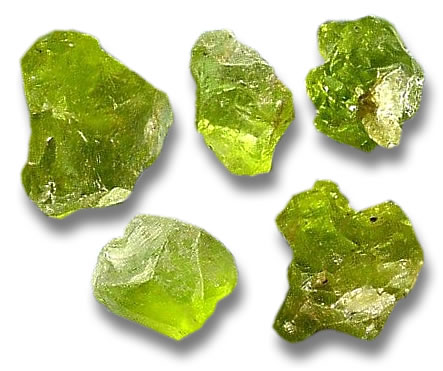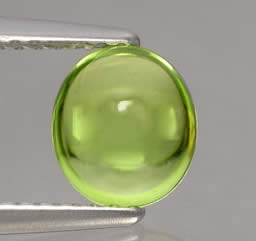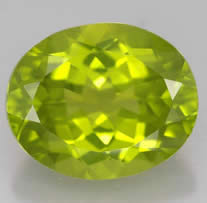|
Reviewed By Andreas Zabczyk
Chrysolite GemstonesOccasionally, visitors arrive at our website in search of a gemstone called chrysolite. However, it is important to note that there is no mineral by the name of chrysolite. We are uncertain about the specific gemstone they are referring to, as it does not correspond to any known mineral. 
Peridot Rough Stone
However, the word chrysolite has a long history in the gemstone world. The name itself means "gold stone," and over time it has been used to refer to different gemstones, including chrysoberyl, peridot/olivine and topaz. The term Oriental chrysolite was used to refer to yellowish-green sapphire and Ceylon chrysolite was used to refer to olive-green tourmaline. There were also terms like Saxon chrysolite (greenish-yellow topaz), Cape chrysolite (prehnite) and false chrysolite (moldavite). Chrysolite is referenced multiple times in the Bible, appearing in the list of gemstones adorning Aaron's breastplate (Book of Exodus) and in the list of foundation stones for the New Jerusalem (in Revelation). It is worth noting that several gemstone references in the Bible can be somewhat ambiguous, as many gemstone names were used to describe stones of a particular color rather than specific minerals. 
Peridot Cabochon
Many scholars believe that chrysolite was most likely used to refer to the mineral olivine, known in gemology as peridot. Olivine is not itself an official mineral, but is composed of two minerals; fayalite and forsterite. Historically, the most important deposit of peridot was on the volcanic island of Zabargad (St. John) in the Red Sea, east of Aswan, Egypt. This deposit was mined for over 3500 years and was very well known in the ancient world. It has been speculated that many of Cleopatra's famous emeralds were, in fact, peridot gemstones from Zabargad. 
Faceted Peridot
Modern peridot sources are Burma (Myanmar), Pakistan, China, Vietnam and the United States. The finest quality peridot has traditionally come from Mogok in Burma, though the Pakistani peridot is now highly regarded as well. The USA was for many years the largest producer of peridot, from major deposits in Arizona. Curiously, peridot has also been found in a meteorite that fell in Siberia in 1749. This Page in Other Languages
|
| STAY IN TOUCH | NEWSLETTER |
| *You're signing up to receive GemSelect promotional email. |
Copyright © 2005-2024 GemSelect.com all rights reserved.
Reproduction (text or graphics) without the express written consent of GemSelect.com (SETT Company Ltd.) is strictly prohibited.
1217